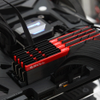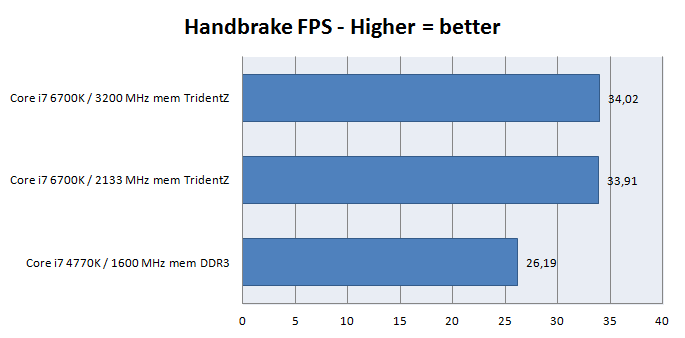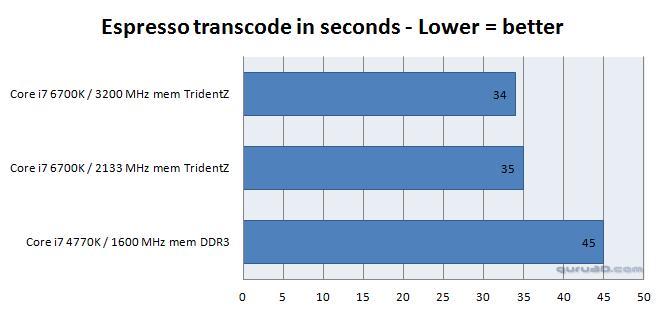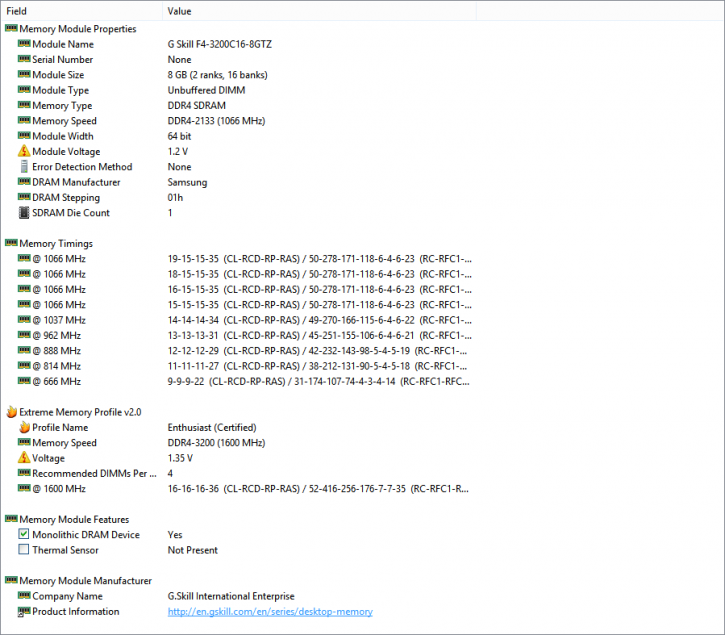Performance - Video Transcoding
Video Transcoding
x.264 is a free library for encoding H.264/MPEG-4 AVC video streams. Encoding/transcoding to that format is one of the most intensive tasks a processor can perform and needs to access system memory to do so. We encode a h.264 Dolby Digital 1080P trailer of 150 MB to Matroska x.264 with 5.1 channels AC3. This software is a perfect benchmark for CPU and memory testing as it is very sensitive to multiple cores and memory frequency. The displayed number is the number of frames rendered per second averaged out over the encoding process. The higher the number, the faster the performance is.
So here's a good school example of the fact that faster clocked memory on the frequency is not always that much faster overall. The differences are incredibly small. But the 2133 MHz kit remains close to the memory at 3200 MHz.
With Mediashow Espresso we did manage to shave of one second with the faster memory. This is the picture that will be painted throughout the entire review I'm afraid. Running a Wprime run shows very similar results as well.
So going from 2133 MHz towards 3200 MHz on the memory shaved off a whopping 1 second on calculating a 1024M of Prime numbers.
At 2133 MHz the TridentZ memory remains fast as within its SPD Jedec profiles it will configure itself at 1066 MHz (x2) yet can manage a CL 15-15-15-35 setting at a command rate of just 1. Realistically, this results in bearly as much performance as 3200 MHz DDR4 at CL16. Welcome to the memory jungle :)






